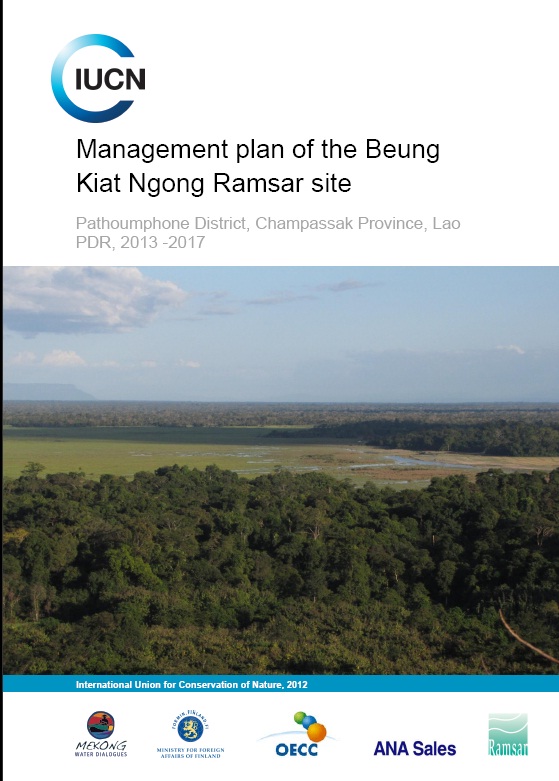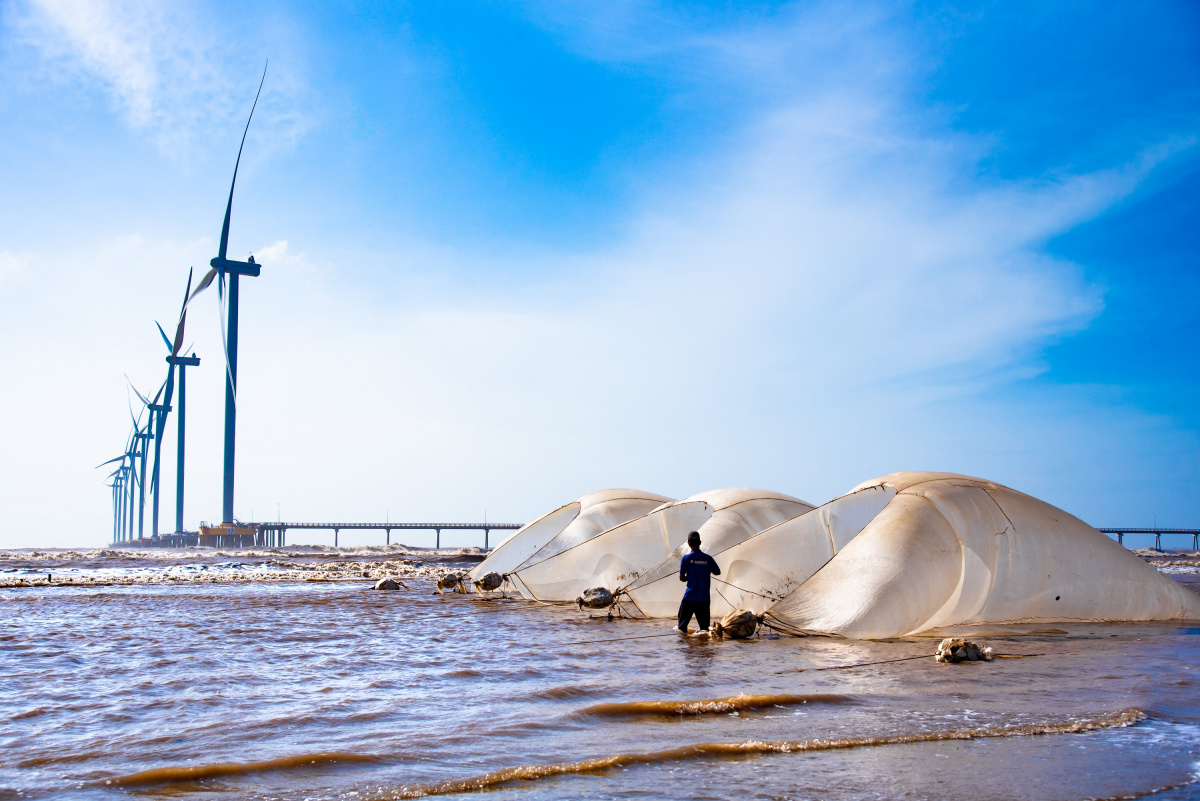Management Plan of the Beung Kiat Ngong Ramsar Site
In September 2010, the Beung Kiat Ngong Wetland, in Champassak Province, Lao PDR was formally recognized as one of the 2 Ramsar sites in the country.

Photo: Beung Kiat Ngong Wetlands _ RAMSA Site
In September 2010, the Beung Kiat Ngong Wetland, in Champassak Province, Lao PDR was formally recognized as one of the 2 Ramsar sites in the country.
The wetland is a unique and precious site because it contains diverse wetland types (swamps, lakes, marshes, and peat land); has potential high biodiversity value; and supports the livelihoods of approximately 11,500 people. The Government of Lao PDR, with support from IUCN, has taken key steps to implement the convention. National, provincial and site level committees have been set up to manage the site and in 2011 and 2012, with support from IUCN Lao PDR, workshops were held to build support for Ramsar implementation among community members.
This dialogue between community members and the Ramsar Provincial Committee on the long-term management of the Ramsar site led to the drafting of an initial 5-year (2013-2017) management plan.
The long-term objectives of the management plan for the site include:
i) To ensure the conservation and restoration of wetland functions, habitats and biodiversity by decreasing overfishing and overharvesting and improving land use planning at the site. Further studies and surveys will be performed to gather information on water management, on the potential impact of the growing livestock population on the wetland, and on natural habitats and key species populations in the Ramsar site. Climate change issues will also be studied in the wetland through a vulnerability assessment of the site.
The involvement of local communities in management and monitoring will be sought through the establishment of community patrols and participatory workshops and trainings.
ii) To maintain and enhance the food security, livelihoods and incomes of the 13 villages that are directly dependent on the site, by increasing the yield from rice cultivation and diversifying cultivation, as well as by managing NTFP resources to improve sustainability and income on a community-shared basis. Tourism improvement will be sought as an important alternative source of income.
iii) The cultural value of the site will also be one of the focuses of this management plan, and efforts will be made to document and disseminate the Mahout tradition and the local history.
iv) The improvement of governance and organization is a primary objective as well of this management plan, to be achieved through better distribution of information and through activities to raise awareness of the site’s Ramsar status. Incorporating local communities in the management process and improving coordination between local authorities and the village level will be prioritized to maintain the collaborative dynamic initiated during the drafting of the plan.
All activities will be managed by the Provincial Ramsar Committee, with support from IUCN Lao PDR office and cooperation among different partners and, as much as possible, the leadership and involvement of the communities in the technical implementation of the plan. The plan will be regularly assessed and revised, as a living document and a framework for any future activity on Beung Kiat Ngong Ramsar site.
For more information please contact our Water and Wetlands Programme Coordinator_Mr. Raphael Glemet at raphael.Glemet@iucn.org



